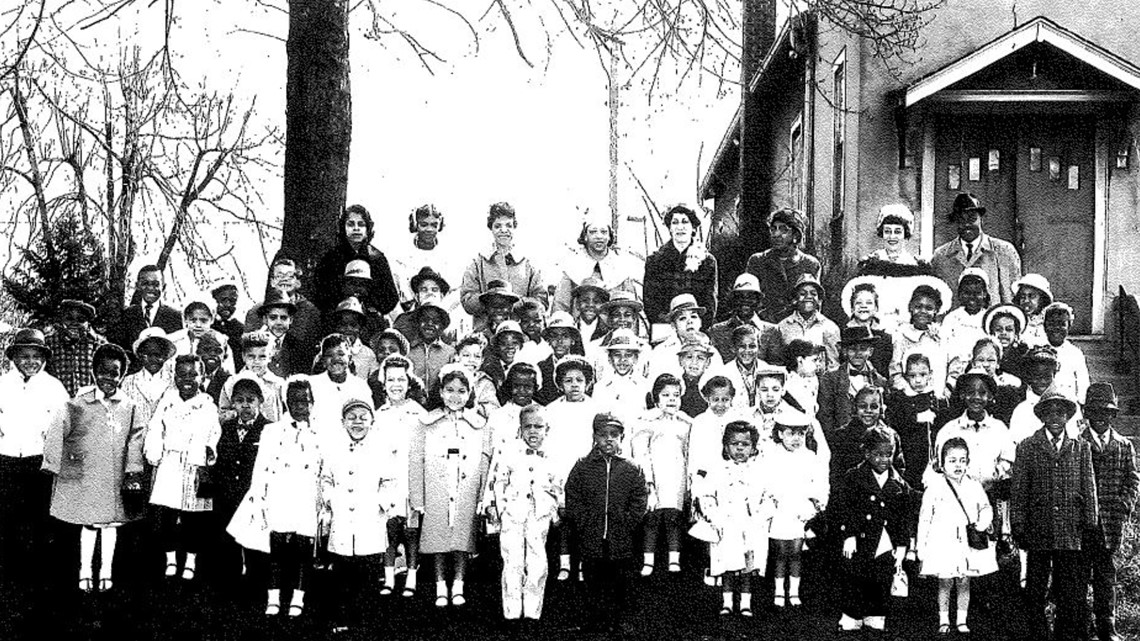COLUMBUS, Ohio — The history of the Hilltop neighborhood on the west side of Columbus is a rich one but can be overlooked by recent violence and poverty plaguing the area.
The greater Hilltop neighborhood was segregated for years, made up of smaller communities within the area.
10TV spoke with several people who grew up in the Hilltop’s Black community about what they remember from a different time and what they would like to see in the future.
“In this neighborhood, you had a booming, white-collar neighborhood of families; everything,” said Wes Redd. “So it was just a joy to live up here at that time.”
Redd, a West High School graduate of 1974 and father of former professional basketball player, Michael Redd, spent 45 years on the Hilltop.
Much of Wes Redd’s time in the neighborhood was spent at the previous Oakley Full Gospel Baptist Church location https://oakleyfullgospel.org/ and the J. Ashburn Jr. Youth Center, now part of the Boys and Girls Club of Central Ohio.


“Everybody came there after school,” Redd said. “To learn arts, basketball, and so we had thousands of kids that would migrate right there and we stayed there from about 3 to about 9 p.m. playing basketball and everything else.”
Born into a third-generation Hilltop family, Byron L. Potts told 10TV that his family was one of the first black families in the neighborhood, settling down on Oakley Avenue from Dry Rock, Virginia in 1913.
“It was a very close-knit family on the Hilltop,” Potts said. “I’m talking about family – not only blood relatives – but we all knew everyone. It was a very close-knit neighborhood.”
Now an attorney, Potts recalls the central role that Oakley and the youth center played in his childhood.


“We need to get back to that; the neighbors knowing neighbors and doing the things that we need to do to have a family atmosphere,” he said.
Often now, that neighborhood feel isn’t what makes the headlines, which are typically centered around the violence often associated with the Hilltop neighborhood.
To understand how the Hilltop got to where it is now, one has to look back.
The Hilltop is well-known as the grounds for Camp Chase.
Established in 1861, Camp Chase was formed as a union training camp for the Civil War and later, a Union prisoner of war camp.
Spared by its namesake, the Great Flood of 1913 devastated the surrounding areas like Franklinton, sending many people further west to the Hilltop, bringing with them new businesses.
Throughout that migration to the Hilltop, a social divide was taking place across the country, including across Columbus, Ohio.
“It was segregated on the Hilltop for years,” Potts explained. “And what that did is that segregation brought us together as a family.”
What is often overlooked are the big names that emerged from the Hilltop such as Nancy Wilson, a three-time Grammy award winner and West High School graduate.
Four-time Olympic gold medalist and track star, Jesse Owens lived on south Oakley while making history at the Ohio State University.
And living legend Bea Murphy became known over the years as a talented poet and west side historian.
“You hear a lot of negative things but the west side is really nice,” Murphy told 10TV, sharing memories of her history and love for the community.
But by the time Westland Mall closed, falling short of the brand new Mall at Tuttle Crossing to its north, the neighborhood lost a lot of its draw.
Loss of businesses such as Western Electric, General Motors and Westland Mall is an issue, Redd believes has led to some of the neighborhood’s distress.
“People feel like they’ve been forgotten and the thing is, when people feel like they’re forgotten, they get angry,” he said.
For Potts, a major issue in the area is absentee landlords, he said.
“When you have people with lower incomes and economic problems, what you have is you have problems with people fighting over money and that breeds violence and those kind of things,” Potts said.
One solution Potts believes could improve the area is to transform vacant lots and strictly rented homes into rent-to-own properties for people who live there.
“Watch how the crime will decrease, how the neighborhood will look better and it will be more of a neighborhood and not just people living next to each other,” he said.
Over the last few years, the City of Columbus has launched new efforts to revitalize the Hilltop neighborhood through a new Hilltop Land Use Plan.
and Envision Hilltop, a community plan looking at issues of housing, retail and small business, education and workforce, along with health and safety within the neighborhood.
“Don’t write the Hilltop off,” Potts said. “The Hilltop is resilient and I believe that if given a fair opportunity, it’s going to make a tremendous comeback.”

